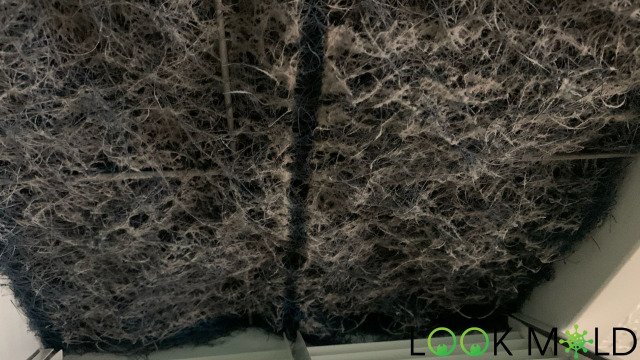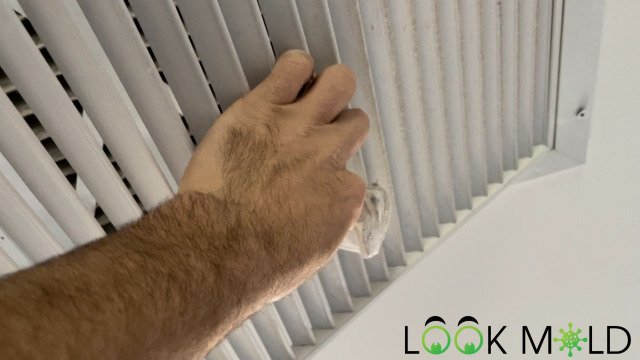ERMI Mold Test: A Comprehensive Guide to Dust Sampling For Mold
Expert insight by: Brad Fishbein, Licensed Mold Assessor
Updated February 4, 2023
The ERMI test — short for Environmental Relative Moldiness Index — is a dust collection test developed by the U.S. Environmental Protection Agency (EPA) to help measure mold contamination inside a home. Instead of sampling the air like traditional methods, it analyzes settled dust using DNA-based PCR testing to identify 36 types of mold species commonly found indoors.
But here's the real question: Is it accurate? Should you use it?
This article covers everything you need to know, including how the test works, its benefits, its controversies, and what the EPA actually says about it.
How Is an ERMI Test Done?
Most mold testing involves air samples (spore traps) or swabs of visible mold. ERMI is different — it tests your dust.
Dust samples are collected from various places in the home using a swab, vacuum cassette, or even a simple ziplock bag. Once collected, the sample is sent to a lab that performs quantitative PCR (qPCR) testing to extract mold DNA from the dust.
You might also hear the term MSQPCR — this stands for Mold-Specific Quantitative Polymerase Chain Reaction.
The EPA developed this method as a research tool to measure mold in U.S. homes.
Source: EPA ERMI Fact Sheet (2021)
Understanding the ERMI Score
Once the lab analyzes the sample, you’ll receive a report showing how much DNA was detected from each of 36 mold species. These are broken into two groups:
- Group 1: 26 species linked to water damage and problem homes
- Group 2: 10 species commonly found in typical, clean homes
The final ERMI score is calculated using a formula:
ERMI = Sum of Group 1 molds − Sum of Group 2 molds
Score Range:
- -10 = Very low mold presence
- 0 to 5 = Average
- 10 to 20 = High
There’s no official pass/fail, but higher scores can indicate a history of water damage or mold contamination.
Who Can Perform ERMI Testing?
Unlike air sampling, which is usually done by a certified mold inspector, ERMI dust collection can be done by anyone — including homeowners. All that’s required is a dust sample from the right locations in the home.
This makes it more affordable and accessible than other types of testing.

Where Should You Collect Dust Samples?
This is where things can go wrong.
The location of the dust sample is critical to the accuracy of the results. Most labs suggest collecting from multiple rooms or across the entire home — but this can dilute or hide localized problems.
Best places to collect dust:
- Behind or under furniture
- HVAC return vents
- Corners of carpeted rooms
- Under couches or beds

Tip: Avoid sampling recently cleaned areas or introducing contaminated objects (like gym bags or shoes) before testing.
ERMI Testing Controversies
Despite its popularity, ERMI is controversial.
⚠️ EPA’s Position
Yes, the EPA developed the test — but they do not recommend ERMI for routine mold assessment in homes.
"ERMI is a research tool. It is not intended for use in individual home diagnosis, real estate transactions, or health assessments."
— EPA ERMI Fact Sheet
⚠️ False Positives
ERMI tests settled dust, which could contain spores brought in from outside the home — not mold actively growing indoors.

Example:
If you bring in a gym bag that was stored in a moldy garage, spores on that bag can affect the ERMI results — even if your home is clean.
ERMI Doesn’t Tell You Where Mold Is
Another downside: ERMI gives you a score, but not a location. If mold is detected, you’ll still need a full mold inspection to locate the source.

The most accurate approach? Test dust room by room, then inspect any space with elevated results for hidden moisture damage.
ERMI Only Tests 36 Mold Types
There are over 100,000 species of mold, yet ERMI only screens for 36 — and those species were chosen based on samples from homes in Cleveland and Cincinnati, Ohio.
Different climates (like Florida vs. Colorado) can have entirely different mold profiles.
Translation: ERMI may miss species present in your home, depending on where you live.
Is ERMI Better Than Air Testing?
Not necessarily.
- ERMI is good for identifying long-term exposure through settled dust.
- Air sampling is better for evaluating current airborne mold levels and indoor air quality.
They serve different purposes, and one is not inherently “better” than the other. The best approach depends on your goals and symptoms.
How Much Does ERMI Testing Cost?
Prices vary depending on who collects the sample and which lab is used.
- DIY sample: $250–$500 (lab fee only)
- With mold inspector: May cost more depending on labor and consultation
Should You Do an ERMI Test?
If your doctor recommends it or you're experiencing unexplained symptoms, ERMI could provide valuable insight. Just remember:
- It won’t locate the mold
- It may detect spores from outside sources
- It doesn’t test for all mold types
Bottom line: Don’t rely on ERMI alone. Combine it with a full inspection, visual checks, moisture readings, and if necessary — professional remediation.
If you're concerned about mold in your home, always start with a full mold inspection.
Explore Related Topics:

Meet the author: Brad Fishbein is an ACAC council-certified Microbial Investigator. In the fall of 2012, he became a Licensed Mold Assessor in the State of Florida through the Department of Business & Professional Regulation. Brad has helped homeowners with over 5,000 successfully completed Mold Inspections since 2009.

